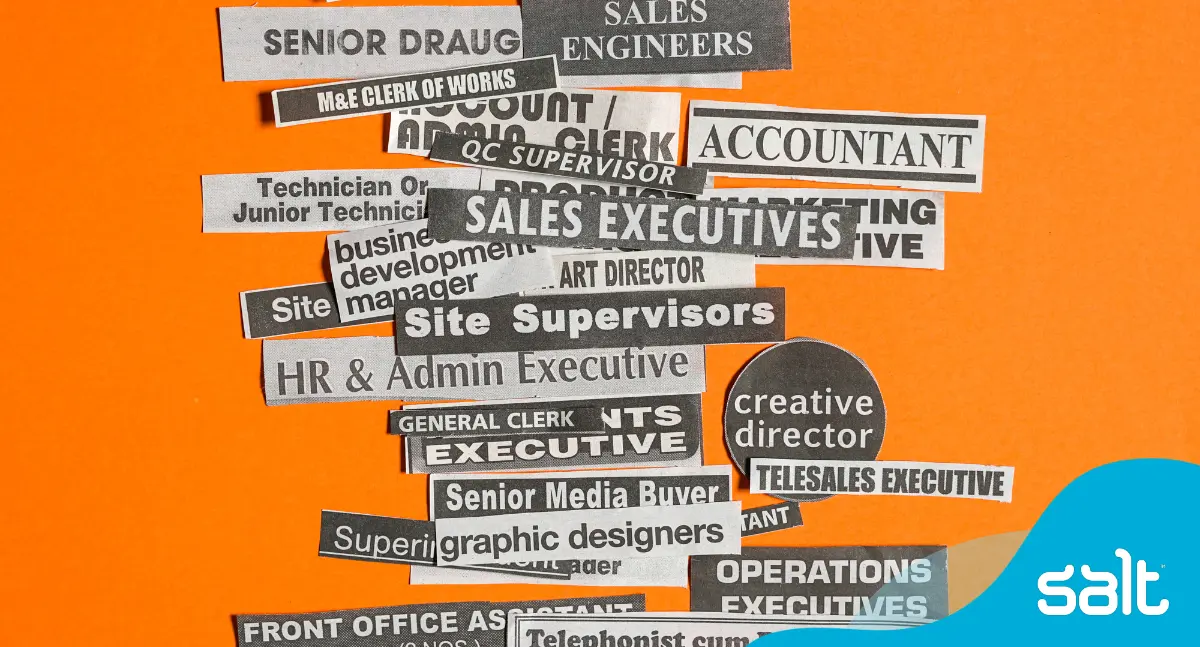
Technology and HR often work in siloes, but there are technology trends HR could really use to solve their talent acquisition and employee retention challenges. Here’s some of the exciting opportunities these trends present to HR and People teams!
This post is authored by Melissa Crawford, the CEO and founder of Tech with Heart. Her consultancy advises companies on how to connect HR and Technology, two normally siloed areas of business. She explains why it’s crucial both disciplines better integrate and understand each as tools and technologies continue to rapidly evolve and impact all of our lives, at work and at home. She combines two technology degrees and her metaverse expertise with some 25 years’ experience in HR to help leaders optimise for the best of both.
I am the director of a company called Tech with Heart, which is about the intersection of future technology and human potential.
I consult with companies on their future of work strategies and I get asked to do a lot of keynote speaking around the world, because I have that unique crossover of people and technology, with 2 technology degrees and 25 years of people and organizational psychology experience.
My career is across both People and Technology showed me the importance of both
I started my career in technology after graduating with my first technology degree. I found myself involved in projects at a time when we were evolving from paper to technology. This was a really exciting phase, but one where people were also scared that computers were going to take their jobs.
The more I got involved in technology projects, the more I felt that wasn’t really a focus enough on people: the impacts, the design elements of technology, et cetera.
So, I ended up pivoting my career for following 25 years, building my experience in people and organizational psychology and behaviours. I was in the people or HR teams across a lot of large corporates here in New Zealand, studying all sorts of the positive elements of high performance: engagement, culture, diversity, and inclusion.
But could see there was this fear of things like artificial intelligence (AI) and robotics and people thinking computers are going steal their jobs, which sounded very familiar to me.
I felt that particularly the HR space really had a role to play in helping with this digital disruption, and planning for the workforce of the future. But how could they do that if they didn’t understand the technologies that were going be impacting it?
I stepped out of my career and went and did my Master’s degree in Technological Futures, focusing my project on AI and how it could cross intersect with leadership. I then got the opportunity to work in a role that worked across technology and people, which was really interesting because most companies want to put you in one department or the other.
From there, I really just took the leap to create my company because I saw a real gap for people that understood and could help to optimize both. Hence the name Tech with Heart, which is kind of like unashamedly saying I actually have both. I don’t want to just look at the technology part, I don’t want to just look at the people part. The magic is where you look at how to optimize the best of both.
The most powerful forces shaping the future of work are people and future technology.
So, I really think those two departments should be working much closer together to help shape this future. They both have great strengths, but they also when they’re so separate, have great weaknesses.
Here’s just some of the areas that optimizing for both people and future technology can help your business thrive:
1. Technology can tap into wasted or overlooked talent in a competitive job market
There’s so much untapped opportunity at the moment. There are a lot of great people applying that are getting missed out from talent pools because the technology is so cumbersome.
There are also people like myself that have experience across industries that currently HR and recruitment platforms can’t properly categorise or cater to. I have to select Technology or People from an initial drop down menu, which then filters the roles to what’s available in each of those ‘separate’ areas, and strips out half my experience!
There are also a number of elements of the workforce that are underutilized. People with disabilities or the aging workforce, can work better than ever before thanks to the fantastic technology that’s really enabling them to step into the workforce.
Even people within current employment within a business are not being able to use their full skill range. They’re often in a particular role and they have talents way beyond that, that are not being tapped into.
Sometimes there are people in a company that have aspirations of what they want to be doing that aren’t being realised. When companies are looking to employ external talent to fill roles, that is noticed by the internal employees.
There’s a massive opportunity for upskilling and reskilling people internally who already have that great base knowledge and IP for your company that you could then help support them, potentially pivot their career. That costs you a lot less than trying to bring somebody completely new on, on board.
2. A metaverse can revolutionize your interviewing, learning and development processes!
What is the metaverse?
There isn’t one “the Metaverse”, which is probably the first thing that people assume. That’s the vision that at some point, but for the moment there are many metaverses.Metaverses are these virtual worlds, where you are an avatar, a digital representation of you, and you can move about, connect with people, talk to people. It feels much more like you are there than just on a Zoom call or typing a message to somebody.
So, I’ve been to conferences in the Metaverse where I’ve been with a global community, and I’ve been walking around as a little avatar. I’ve virtually shaken hands with people. I’ve watched these amazing speakers and as you move around, you feel like you’re there. Like you can actually hear your shoes making noise on the ground as you walk around.
You can apply to a job in a metaverse!
For example, I might be applying for a job at a company. They may have a virtual metaverse of their company, maybe they’re a global company and they have a virtual campus, and so I go for this interview in this digital world.
As I’m walking my avatar around, I walk up to the reception area and, and I say ‘I’m here my interview’. they walk me into this little virtual meeting room, but on my way there, through this metaverse, I can see all their branding on the walls and I can see videos playing of functions that they’ve had or products or services that they offer, et cetera. So, I really kind of get a feel for the company as I’m walking around.
I also see other little avatars walking past who actually work at that company. And as I walk past and they’re like, hello, welcome to X, Y, Z company. I can’t even describe to you, but it really feels like you are there with them. This is really a step ahead when it comes to human connection.
But then what’s great is maybe one day I get that job and then I get to go to the global conference, and when I go to the head office, I walk into the building and I go, oh wow, this is the building that I went to in that interview! So I feel like I’ve already experienced it. I know where the staircase is, I even know where the bathrooms are because I remember walking past them and when I went for this interview.
You can train and onboard people in a metaverse!
You could use the metaverse for onboarding purposes and for training purposes. Especially where you couldn’t get people all together face to face, which obviously is the best case, this is a big leap from a Zoom call or online chat.
Training and development can simulate things at very low cost within a metaverse. So, for example, some hospitals are doing work where they’re simulating operations with doctors around the world learning from each other.
Say you have this doctor Metaverse and you have these top global doctors from around the world, and they’re in this room and you are simulating an operation: in front of you is the actual simulated body with all the organs and the top cardiologists, for example, can get in there and show exactly what they would do. You feel like you are there. You could even pick up bits and pass pieces around to the avatars, which is quite a different experience to someone just talking and presenting something on a Zoom meeting.
Another example is unconscious bias or empathy training. By people taking different avatars and different characters, they actually experienced better empathy just by being in a different avatar body than their natural selves. So there’s some really interesting stuff coming out and that’s the sort of stuff I’m kind of monitoring at the moment.
One example is of people in the metaverse being put into the avatar body of a pregnant lady. Even how they walked around and how they interacted with others. they couldn’t believe how different it felt. They were also experiencing first-hand how other people reacted to them which was so eye-opening.
Metaverses connection and engagement across your workforce
One of the big things that Covid taught us is how important connection is. Any opportunity for a technology that actually enhances connection and engagement, I think HR should be leaning into.
During Covid, people were really good at having a special quiz on a Friday night, or planning virtual events. A lot of this stuff’s kind of dropped off.
The metaverse creates another opportunity for them to do some quite lavish activities that they certainly wouldn’t be able to afford to do in the real world because they can design this metaverse to look how they want and act how they want.
I was in a metaverse for a company that does design experiences and one of the other people that I was with suddenly found this feature where you could ride a dolphin. You couldn’t really do that in a normal workplace!
There is a surprise and delight factor, which people love, which you can do on a really interesting scale in a metaverse.
Metaverses can engage younger demographics joining the workforce.
There are baby metaverses like Roblox, Minecraft and Fortnight that your incoming demographics to your workforce are already all over, navigating it every day.
Stats from Gartner predict just how often we are going to be using the Metaverse in the very near future. By 2026, they predict that 25% of people will spend at least one hour a day in the metaverse for work, shopping, education, social and/or entertainment, according to Gartner, Inc.
So, this is coming, and so I think that’s why they should kind of get on board.
3. AI can help your engage your workforce with personalisation
People have a fear of things that they don’t understand. But AI is already in the HR world: there’s a lot of recruitment systems and learning systems that are using it. Some companies that have got sophisticated people data analytics are using it.
There’s a lot of opportunities for better personalization with the use of AI, and I think that personalization is something that the HR department should be very interested in.
Around a decade ago, customer service departments got much more attuned with personalization to customers. Remember back in the day, you would’ve got a ‘Dear customer’ kind of letter, and then it was quite revolutionary when you got a ‘Dear Melissa’ letter. Well, even our employees to an extent get a bit of a sheep dipping process a lot of the time.You’ve got the HR data, there’s a lot of information that you could leverage to personalize experiences much more, which increases engagement with your staff as well as retention.
If your Technology teams are working on AI projects, this is a perfect opportunity to work more closely with them, and feed into design and development from a People perspective.
The information that’s being used in some of the machine learning, for example, I think HR could play a really great role in testing the usage of that and the implications of how that information might be used.
My advice for those in HR and People wanting to get more of an understanding of AI and it’s implications is to find somebody they can trust to talk them through the technology, whether that’s internally from their Technology and IT teams, or an external expert.
Read and listen to our full interview with the wonderful Melissa Crawford here!
Want to hear more from Melissa?
Follow her or her company Tech with Heart on LinkedIn – she’s constantly posting interesting articles around Technology, People and psychology. She has a program on Mastermind.com: An Introduction To Future technologies For Curious People Like You.
Hiring? Salt connects you to outstanding top talent worldwide
If you’re interested in hearing about how Salt’s top talent recruitment experts around the world can help with your hiring right now, get in touch. Click below to contact the closest Salt team to you!
- Australia
- Canada
- Belgium
- Europe
- Hong Kong
- Malaysia
- Middle East and North Africa
- Netherlands
- New Zealand
- Singapore
- South Africa
- United Kingdom
- United States
Keep up with Salt’s top talent job market insights and hiring advice! You can keep in the loop by following us on. LinkedIn, YouTube, Facebook, Instagram, and Spotify.


